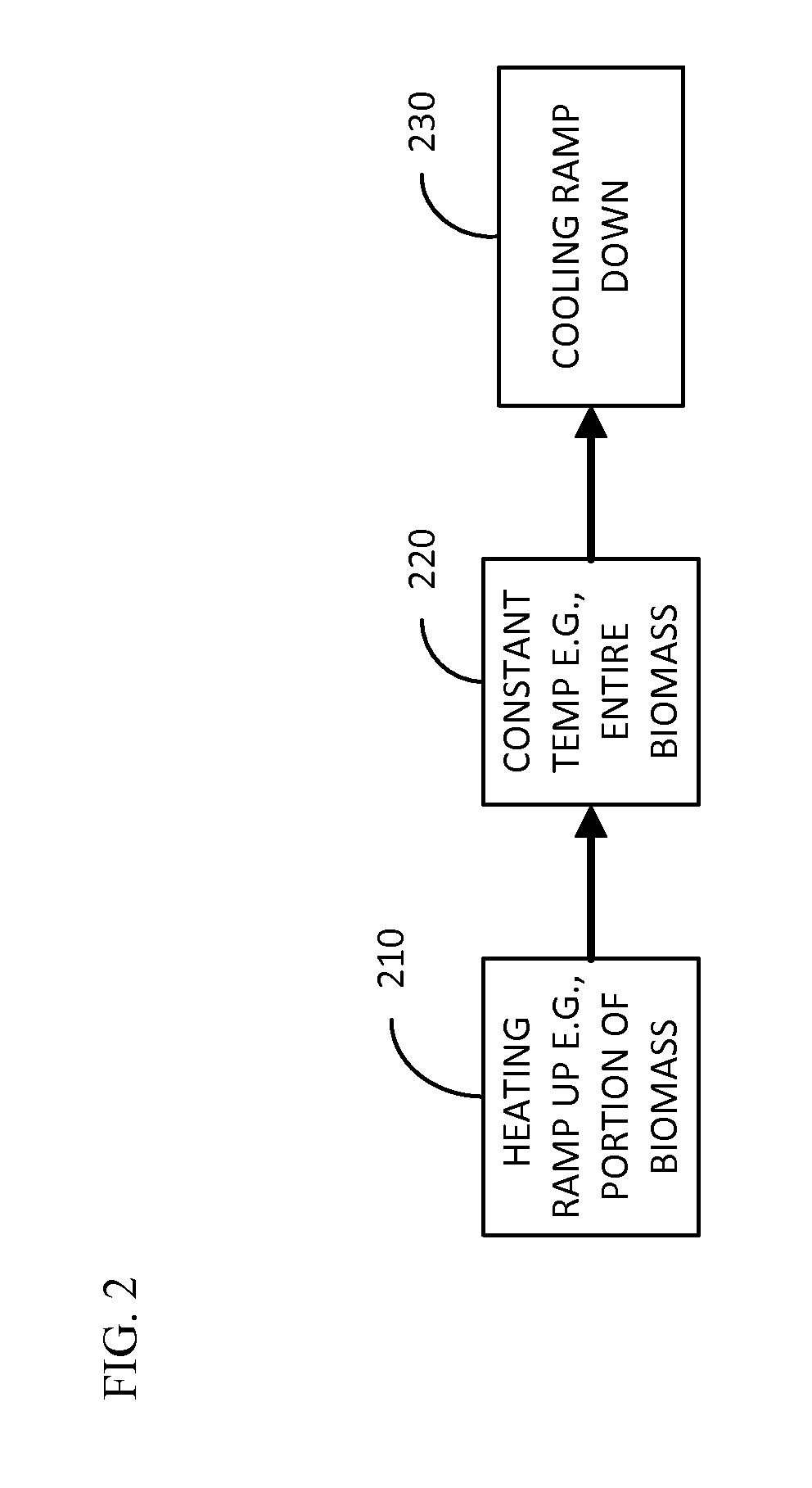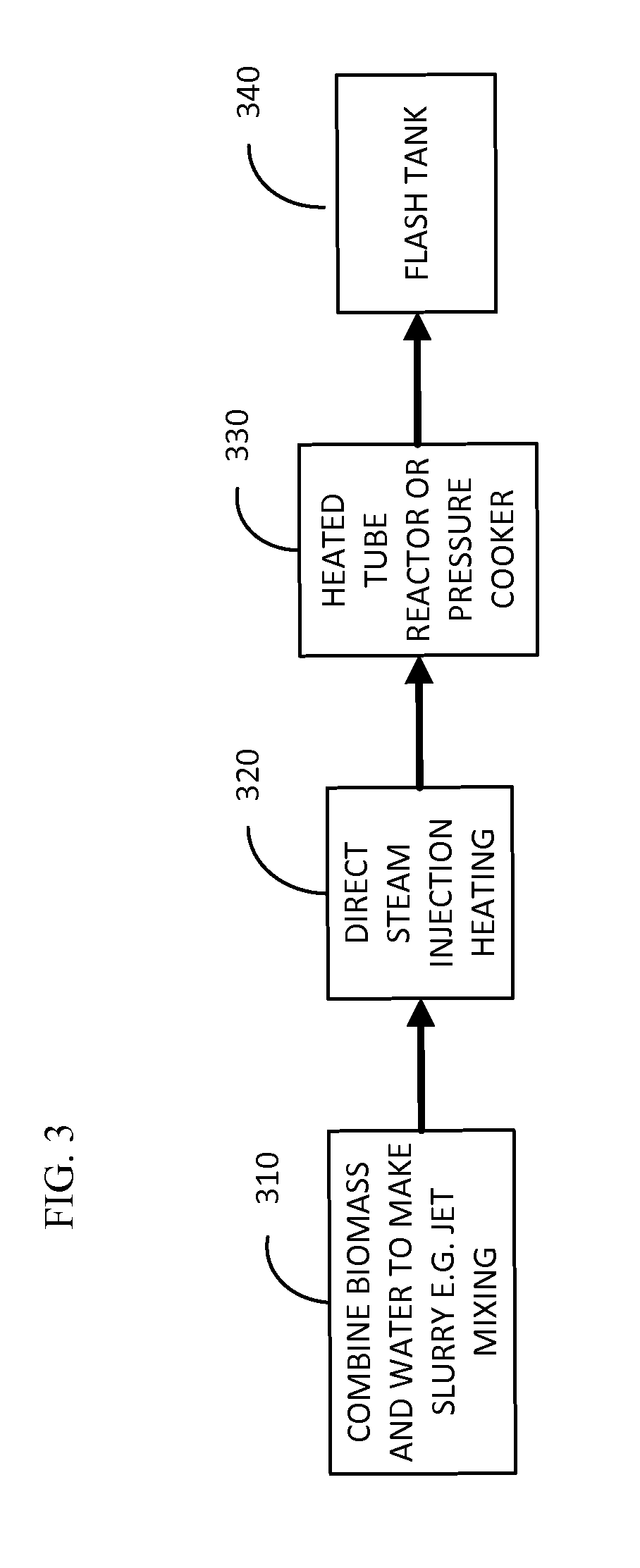Processing biomass
a technology of biomass and hydrolysis enzymes, applied in the direction of sucrose extraction by chemical means, glucose production, biofuels, etc., can solve the problems of low yield of cellulosic materials when contacted with hydrolysis enzymes, compact matrix that is difficult to access by enzymes and other chemical, biochemical and/or biological processes, and often under-utilized materials, etc., to achieve high yield of products and enhance sugar yields
- Summary
- Abstract
- Description
- Claims
- Application Information
AI Technical Summary
Benefits of technology
Problems solved by technology
Method used
Image
Examples
Embodiment Construction
[0022]Using the equipment, methods and systems described herein, cellulosic and lignocellulosic feedstock materials, for example that can be sourced from biomass (e.g., plant biomass, animal biomass, paper, and municipal waste biomass), can be turned into useful products and intermediates such as sugars and other products (e.g., fermentation products). Included are equipment, methods and systems to reduce or further reduce the recalcitrance of these materials.
[0023]Referring to FIG. 1, processes for manufacturing sugar solutions and products derived therefrom include, for example, optionally mechanically treating a cellulosic and / or lignocellulosic feedstock 110. Mechanical treatments can, e.g., reduce the size of the biomass and / or reduce the recalcitrance of the biomass. Before and / or after this treatment, the feedstock can be treated with another physical, mechanical and / or chemical treatment, for example irradiation, to reduce, or further reduce its recalcitrance 112. After such...
PUM
| Property | Measurement | Unit |
|---|---|---|
| temperature | aaaaa | aaaaa |
| temperature | aaaaa | aaaaa |
| temperature | aaaaa | aaaaa |
Abstract
Description
Claims
Application Information
 Login to View More
Login to View More - R&D
- Intellectual Property
- Life Sciences
- Materials
- Tech Scout
- Unparalleled Data Quality
- Higher Quality Content
- 60% Fewer Hallucinations
Browse by: Latest US Patents, China's latest patents, Technical Efficacy Thesaurus, Application Domain, Technology Topic, Popular Technical Reports.
© 2025 PatSnap. All rights reserved.Legal|Privacy policy|Modern Slavery Act Transparency Statement|Sitemap|About US| Contact US: help@patsnap.com



